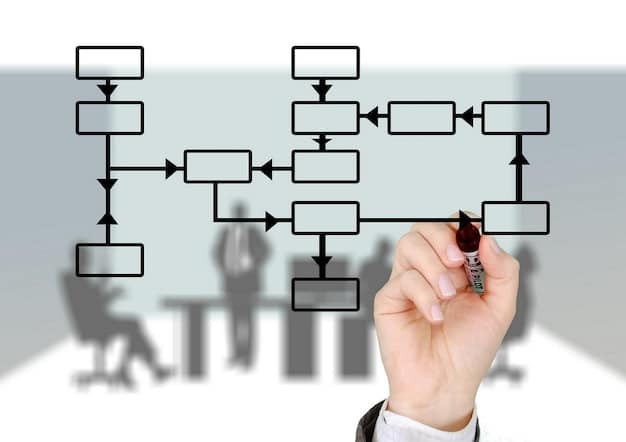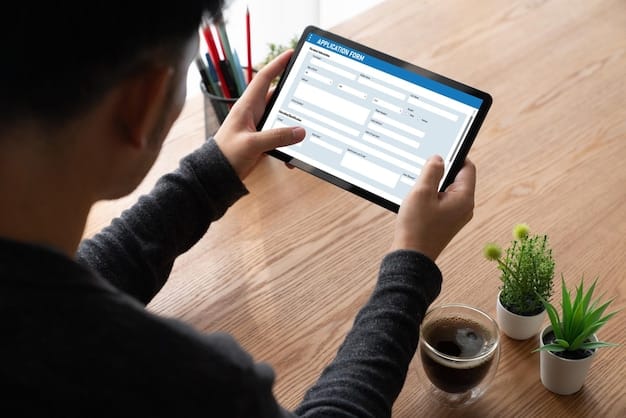Streamline Freelance Client Onboarding: A Step-by-Step Guide

Freelance client onboarding is the process of integrating new clients into your business, setting clear expectations, and ensuring a smooth working relationship from the start, which ultimately leads to increased client satisfaction and project success.
In the competitive world of freelancing, making a stellar first impression is paramount. A well-structured freelance client onboarding process not only sets the stage for successful projects but also distinguishes you as a professional who values their clients’ time and needs. This guide will walk you through creating a seamless onboarding experience that sets you apart.
Why a Solid Onboarding Process Matters
A strong onboarding process is more than just a formality; it’s the foundation of a lasting and successful freelance relationship. It ensures that both you and your client are on the same page from the outset, minimizing potential misunderstandings and maximizing productivity.
Building Trust and Credibility
A well-defined onboarding process demonstrates your professionalism and attention to detail. It shows clients that you’re organized, reliable, and committed to providing a positive experience. This initial impression can significantly impact their perception of your work and your overall brand.
Setting Clear Expectations
Onboarding is the perfect opportunity to clearly outline project scope, timelines, communication protocols, and payment terms. By addressing potential issues upfront, you can prevent scope creep, missed deadlines, and payment disputes down the line.
- Establish Communication Channels: Define how you and the client will communicate (e.g., email, phone, project management software).
- Clarify Project Scope: Ensure you both have a shared understanding of project deliverables and boundaries.
- Set Realistic Timelines: Determine achievable deadlines and factor in potential delays.
- Agree on Payment Terms: Clearly state your rates, payment schedule, and accepted payment methods.

In conclusion, a solid onboarding process is crucial for fostering trust, setting clear expectations, and creating a positive client experience right from the start. It lays the groundwork for a successful and long-lasting freelance relationship.
Key Elements of an Effective Onboarding Experience
Creating a fantastic onboarding experience involves several key elements that work together to ensure a smooth and positive start to your freelance projects. By focusing on these elements, you can impress your clients and set yourself up for success.
Welcome Packet or Email
A welcome packet, whether digital or physical, provides new clients with essential information about your services, processes, and contact details. A warm, personalized email can also accomplish this, setting a friendly and professional tone from the get-go.
Contract and Legal Agreements
Having a clear and comprehensive contract is crucial for protecting both you and your client. It should outline the scope of work, payment terms, confidentiality agreements, and other legal considerations.
- Scope of Work: Describe the specific tasks and deliverables included in the project.
- Payment Terms: Detail your rates, payment schedule, and accepted payment methods.
- Confidentiality Agreement: Protect sensitive information shared between you and the client.
- Termination Clause: Outline the conditions under which either party can terminate the agreement.
In summary, an effective onboarding experience hinges on delivering a welcoming introduction, establishing clear legal agreements, and thoroughly understanding your client’s needs and goals.
Crafting Your Client Intake Form
The client intake form is your tool for gathering all the information you need to fully understand the client’s project requirements. The goal is to make sure it’s intuitive and well-organized, that way, clients do not feel that they need to spend too much time getting it right.
Essential Questions to Ask
Your intake form should include targeted questions that provide insights into the client’s business, goals, target audience, and project expectations. This information forms the basis for a successful project.
Designing for User Experience
Make your intake form easy to navigate and complete. Use clear and concise language, break up long sections with headings and bullet points, and consider using online form builders for a professional look and seamless submission process.

- Keep it Concise: Avoid unnecessary questions that don’t directly contribute to project understanding.
- Use Clear Language: Avoid jargon or technical terms that the client may not understand.
- Provide Examples: Offer examples and context to help clients provide accurate and relevant information.
- Offer Support: Let clients know they can reach out if they have any questions or need assistance completing the form.
To summarize, crafting an effective client intake form involves asking relevant questions that capture essential project information, designing the form for a user-friendly experience, and ensuring it aligns with your brand identity.
Communication Strategies for a Smooth Onboarding
Communication is at the heart of every successful client relationship, especially during onboarding. Setting up a system of open and consistent communication ensures that you and your client stay aligned and informed throughout the entire process.
Setting Up Initial Calls
Schedule an introductory call to welcome your new client, discuss their project in detail, and answer any questions they may have. This personal touch can strengthen the relationship and build trust.
Regular Updates and Check-Ins
Keep your client informed of your progress with regular updates and check-ins. This can be done through email, project management software, or scheduled calls. Consistent communication demonstrates your commitment and keeps everyone on track.
- Establish a Communication Schedule: Agree on how often you’ll provide updates and check-ins.
- Use Project Management Tools: Utilize tools like Asana or Trello to track progress and share updates.
- Be Proactive: Anticipate potential questions and address them before they arise.
- Respond Promptly: Acknowledge and respond to client inquiries in a timely manner.
In conclusion, effective communication strategies during onboarding involve setting up initial calls, providing regular updates and check-ins, and establishing clear communication channels, to promote a smooth and collaborative working environment.
Leveraging Tools and Technology for Onboarding
In today’s digital landscape, leveraging the right tools and technology can streamline your onboarding process, making it more efficient and professional. From project management software to online payment platforms, technology is an essential part of client management.
Project Management Software
Tools like Asana, Trello, and Monday.com can help you manage tasks, track progress, and collaborate with clients more effectively. These platforms offer features like task assignments, deadlines, and file sharing, ensuring that everyone stays informed.
CRM Systems
A Customer Relationship Management (CRM) system can help you manage client interactions, track communication, and store important client information. This allows you to personalize your approach and provide a more tailored experience.
- Automate Onboarding Tasks: Use automation to send welcome emails, schedule calls, and collect client information.
- Centralize Communication: Keep all communication in one place to avoid confusion and ensure transparency.
- Track Client Progress: Monitor project milestones and identify potential roadblocks early on.
- Secure Payment Processing: Use trusted payment platforms like PayPal or Stripe for secure and reliable transactions.
To summarize, leveraging tools and technology for onboarding includes utilizing project management software and CRM systems, automating onboarding tasks, and ensuring secure payment processing, all improving efficiency and client satisfaction.
Measuring and Improving Your Onboarding Process
The final step in creating a truly remarkable onboarding experience is to continuously measure its effectiveness and look for opportunities for improvement. By gathering feedback and analyzing your processes, you can fine-tune your approach and deliver even greater value to your clients.
Soliciting Client Feedback
Ask your clients for feedback on their onboarding experience. This can be done through surveys, questionnaires, or informal interviews. Their insights can help you identify areas for improvement and tailor your process to better meet their needs.
Analyzing Key Metrics
Track key metrics such as completion rates of intake forms, average onboarding time, and client satisfaction scores. This data can provide valuable insights into the effectiveness of your onboarding process.
- Track Completion Rates: Monitor how many clients fully complete your intake forms.
- Measure Onboarding Time: Assess how long it takes to onboard a new client.
- Monitor Client Satisfaction: Use surveys or feedback forms to gauge client satisfaction with the onboarding process.
- Implement Changes: Use the data and feedback you collect to make targeted improvements to your onboarding process.
To conclude, measuring and improving your onboarding process involves soliciting client feedback, analyzing key metrics, and implementing targeted changes to enhance the overall experience.
| Key Point | Brief Description |
|---|---|
| 👋 Welcome Packet | Introduce your services and set a positive tone. |
| 📝 Intake Form | Gather essential project details and client preferences. |
| 🤝 Communication | Establish clear channels and regular updates. |
| 🛠️ Tools | Use project management and CRM systems to streamline. |
Frequently Asked Questions
▼
Client onboarding is the process of integrating a new client into your freelance business. It includes all the steps from initial contact to the start of the project to ensure a smooth start.
▼
Onboarding is important because it sets expectations, builds trust, and ensures both you and the client are aligned on project goals. A well-planned onboarding experience can reduce misunderstandings.
▼
A welcome packet should include a personal welcome message, an overview of your services, contact information, and any relevant guides or resources. Consider adding a brief introduction too.
▼
An effective client intake form should be concise, easy to understand, and include targeted questions about the client’s business and project goals. Use clear language and provide examples.
▼
You can improve your onboarding process by soliciting client feedback, analyzing key metrics like completion rates, and implementing changes based on that data. Always adapt to your client’s needs and demands.
Conclusion
Creating a **freelance client onboarding** process is essential for setting client expectations, building rapport, and streamlining your business. By following the advice here, you can improve the onboarding process and stand out in the freelance market.





